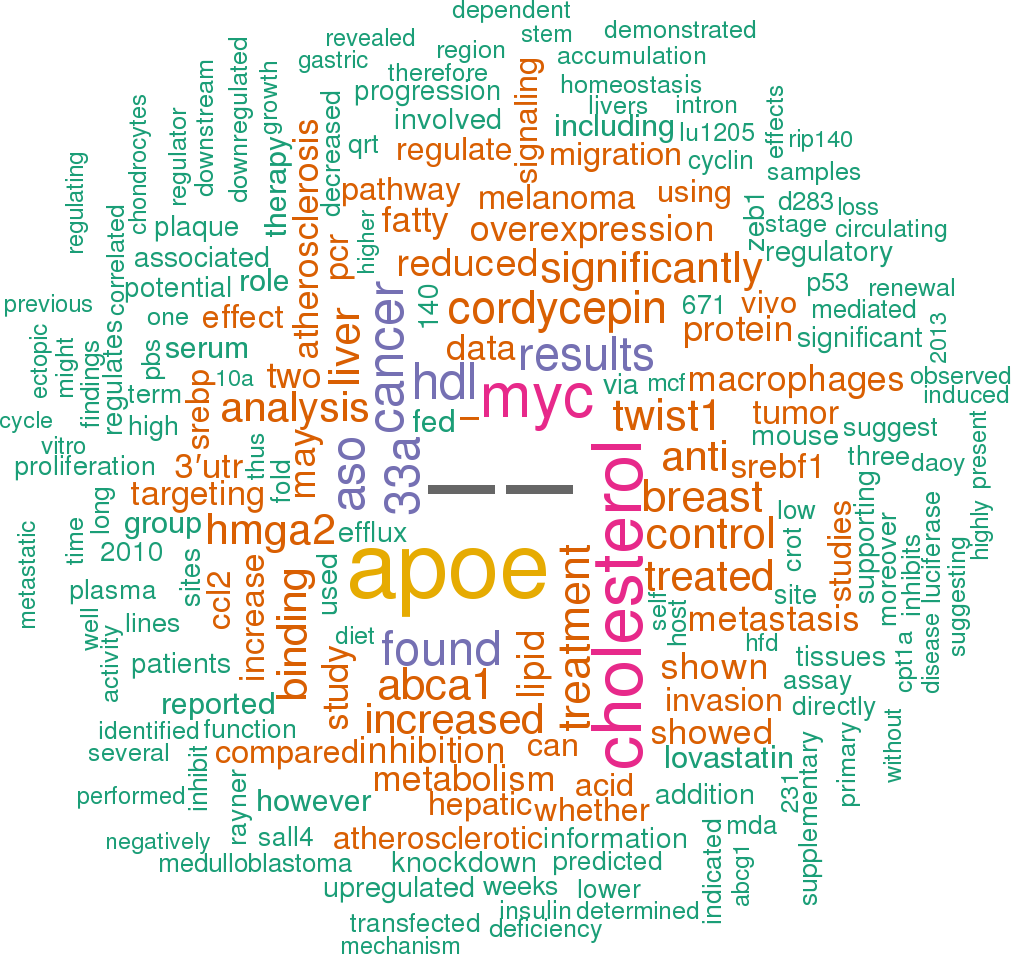Accession
MI0003646
Symbol
HGNC:
MIR33B
Description
Homo sapiens
hsa-mir-33b precursor miRNA
Summary
Caution, this is an AI generated summary based on literature. This may have errors. ?
MIR33B is a microRNA with a tumor suppressor role, typically under-expressed in multiple myeloma (MM) patients [PMC5721125]. It is located in the intron 17 of the SREBF-1 gene locus in humans, and this gene is absent in rodents [PMC3639327]. When overexpressed, MIR33B inhibits tumor growth and enhances survival in MM xenograft mouse models by inducing apoptosis through the suppression of proto-oncogene PIM-1 [PMC5721125][PMC7236745[PMC7236745]. MIR33B expression is influenced by lipid metabolism and can be regulated by statins like pitavastatin, which prevents its suppression by oxidized low-density lipoprotein (oxLDL) [PMC4945056]. It also plays a role in reducing metastasis and the epithelial-mesenchymal transition phenotype, with its silencing reversing cordycepin-mediated effects [PMC4496401]. Additionally, MIR33B expression can be epigenetically suppressed by PRMT5, which promotes lymphoma cell growth and survival through silencing tumor-suppressing miRNAs including MIR33B [PMC10147102][PMC10044308][PMC10044308]. In metabolic contexts, MIR33B has been associated with lipid homeostasis regulation alongside its host gene SREBF-1 and has been found to be upregulated in familial hypercholesterolemia cases, correlating with LDL cholesterol levels [PMC5113745][PMC3359973][PMC5085653[PMC3359973][PMC5085653].
Literature search

121 open access papers mention hsa-mir-33b
(1295 sentences)
(1295 sentences)
Sequence
8963
reads,
70
reads per million, 85 experiments
gcgggcggccccgcgGUGCAUUGCUGUUGCAUUGCacgugugugaggcgggugCAGUGCCUCGGCAGUGCAGCCCggagccggccccuggcaccac
(((((((((.(((.((((((((((((..(((((((((.(((.....))).)))))))))..)))))))))).))))).))).))))...)).....
(((((((((.(((.((((((((((((..(((((((((.(((.....))).)))))))))..)))))))))).))))).))).))))...)).....
Structure
----- --- - c c - UU g g
gc gggc ggc ccg gG UGCAUUGCUG GCAUUGCac ugu u
|| |||| ||| ||| || |||||||||| ||||||||| ||| g
cg cccg ccg ggC CC ACGUGACGGC CGUGACgug gcg a
cacca guc g a - G UC g g
Annotation confidence
High
Do you think this miRNA is real?
Comments
The mature sequence shown here represents the most commonly cloned form from large-scale cloning studies [2].
Genome context
chr17: 17813836-17813931 [-]
Clustered miRNAs
1 other miRNA is < 10 kb from hsa-mir-33b
| Name | Accession | Chromosome | Start | End | Strand | Confidence |
|---|
Biological pathways
hsa-mir-33b is involved in one or more biological pathways:
(Source: Reactome)
(Source: Reactome)
Biological reactions
hsa-mir-33b is involved in one or more regulation/signalling events:
(Source: Reactome)
(Source: Reactome)
Mature hsa-miR-33b-5p
| Accession | MIMAT0003301 |
| Description | Homo sapiens hsa-miR-33b-5p mature miRNA |
| Sequence | 16 - GUGCAUUGCUGUUGCAUUGC - 35 |
| Evidence |
experimental
SAGE [1], cloned [2] |
| Database links |



|
| Predicted targets |



|
Mature hsa-miR-33b-3p
| Accession | MIMAT0004811 |
| Description | Homo sapiens hsa-miR-33b-3p mature miRNA |
| Sequence | 54 - CAGUGCCUCGGCAGUGCAGCCC - 75 |
| Evidence |
experimental
cloned [2] |
| Database links |



|
| Predicted targets |



|
References
|




